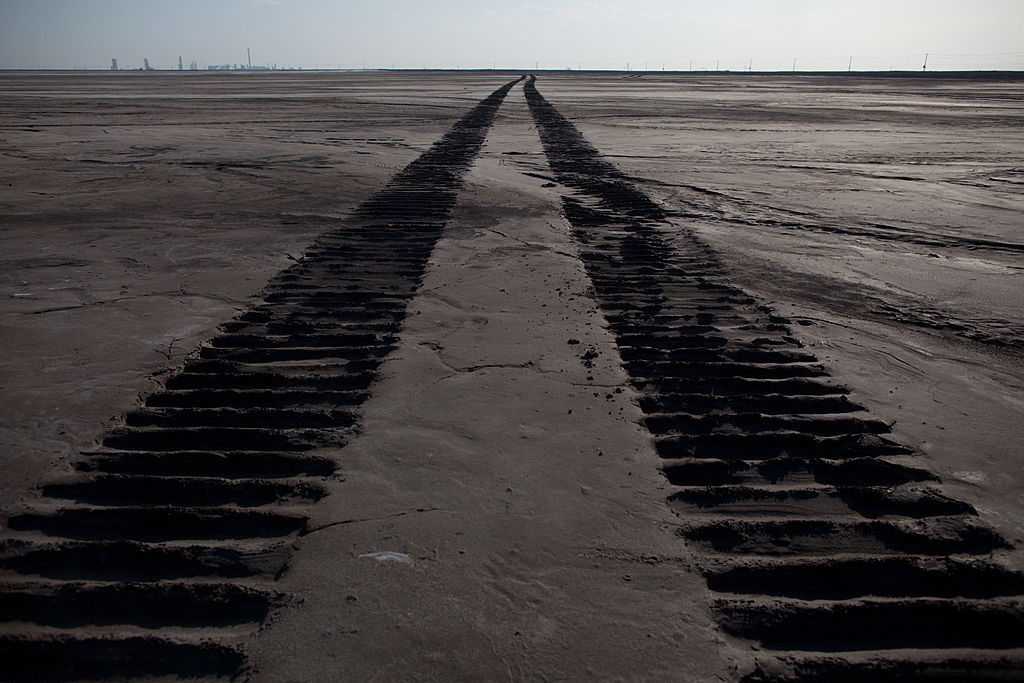
Last week, ASPI researcher Albert Zhang shone a spotlight on a sophisticated Chinese Communist Party information campaign targeting rare earths and Australian company Lynas. This research has powerful implications for those policymakers seeking to create resilient supplies of rare-earth elements (REEs) and critical minerals.
REEs are a group of 17 metals—15 elements from the lanthanide series and two chemically similar elements, scandium and yttrium. Each has unique properties vital for a range of commercial and defence technologies, including batteries, high-powered magnets and electronic equipment. An iPhone, for example, contains eight rare-earth minerals, and there are probably a couple in your refrigerator and washing machine. They also make up about 420 kilograms of an F-35 fighter jet and are essential for guided missiles.
Despite their name, REEs are not all that rare. They’re present in abundance in the earth’s crust. The challenge, however, is finding them in sufficient concentrations to justify commercial mining operations. Securing the upfront financing required to build a mine in a location that will tolerate the substantial environmental impacts of rare-earth processing is no easy task.
Fortunately for China, the commercial viability of its reserves, Chinese companies’ access to state-backed financing and the country’s lax environmental regulations have helped build its dominance of the global REE market.
China’s rare-earth production exceeds that of the world’s second-largest producer, the US, by more than 100,000 tonnes per year. The US still relies on China for most rare-earth imports. According to the US Geological Survey, China accounted for at least 58% of global production of REEs last year, and possibly up to 80% if you include illegal and undocumented production activity. In some cases, like heavy REE processing, China has 100% control of the market.
The problem here isn’t just that the CCP has monopolistic control of the global REE supply chains, but that it is willing to use this power to coerce and control others. The issue is not a hypothetical one. Realising that controlling the global market makes for a useful economic lever, the CCP has used this power to coerce trading partners on more than one occasion.
In 2010, it effectively restricted rare-earth exports to Japan after a Chinese fishing trawler collided with a Japanese coastguard vessel near the disputed Senkaku Islands.
More recently, it threatened to limit rare-earth supplies to US defence contractors, including Lockheed Martin, over US arms sales to Taiwan.
The CCP’s coercive use of its REE monopolies is reason enough for some nations to seek to create sovereign resilience and insulate themselves from manipulation.
Japan, the US and Australia have each sought to improve their supply-chain resilience. Japan has invested in Australian company Lynas for more than a decade to provide it with alternative supplies. The US government has recently done the same for REE supply chains to the Department of Defense. However, unilateral efforts no longer appear to be adequate to secure alternative supply chains.
The CCP doesn’t want to lose its control of this key market. And it has used a range of measures to prevent the diversification of supply chains. China routinely adjusts its domestic production quotas and subsidises rare-earth prices. It uses this power to strategically flood the market when it wants to drive out competitors and deter new market entrants.
Zhang’s work shows that the CCP isn’t just using economic means to prevent the dilution of its monopolistic control of global REE supply chains. It is also willing to use a range of non-competitive covert and clandestine means to maintain its market position.
Establishing alternative REE supply chains is difficult enough. The CCP’s actions, including its information campaigns, rapidly increase the complexity of the challenge. The key strategic message here for Australia, Japan, the US and other like-minded countries is that market forces alone aren’t going to fix this problem.
National-level policymakers cannot, on their own, solve this challenge. Creating global supply-chain alternatives that promote healthy competition and resilience will require minilateral efforts. Here, Australia, as a source of REEs, must work with countries like the US and Japan.
As a starting point, Japanese, Australian and American policymakers need to address several issues to fast-track the creation of alternative supply chains.
For investors, financing new or emerging REEs has substantial geopolitical risk. To mitigate that, policymakers should consider creating a sovereign REE risk fund to underwrite the commercial risk from the CCP’s overt and covert activities.
The Australian government needs to consider how it might promote Australian industry and entrepreneurs to move further along the REE value chain. Policy levers, including tax measures, will be crucial to success. There is significant potential in the establishment of multi-ore mineral-processing hubs in Australia.
Policymakers and industry will need to find ways to mitigate the effects of both China’s market-distortion tactics and more normal ebbs and flows in demand. Various mechanisms are required, including minilateral REE ore stockpiling and market interventions that flatten out demand.
Australia must engage with industry 4.0 technology and move further along the REE value chain so that it is more than just a miner. Japan and the US ought to see the mutual benefits of this approach. After all, there is no point in creating supply-chain resilience for REE ores if miners must still send them to China for processing.
While these suggestions offer options, they are only a starting point. Over the next year, ASPI intends to increase the public discourse on and knowledge of REEs in Australia. Only through better policy will Australia and its allies achieve the REE supply-chain security and resilience essential in the 21st century.

